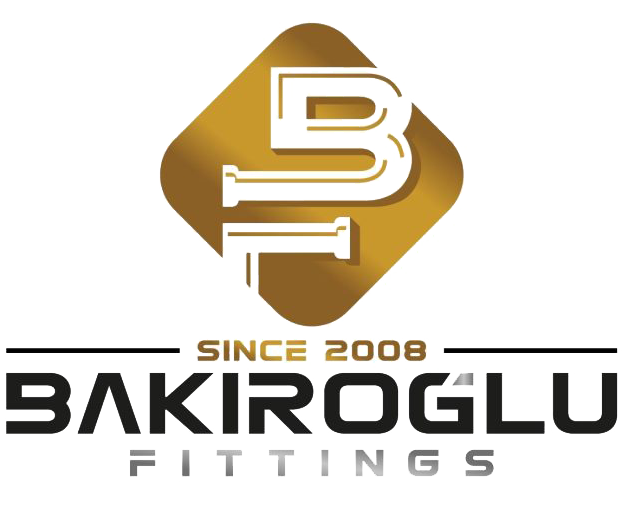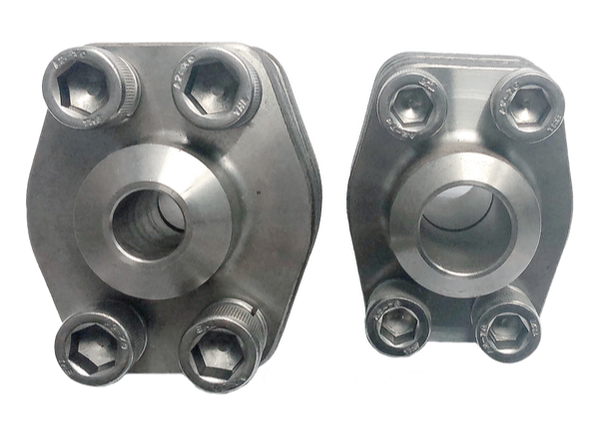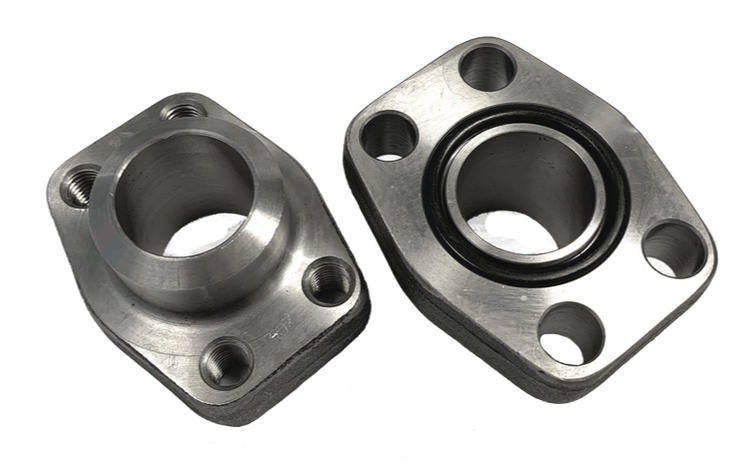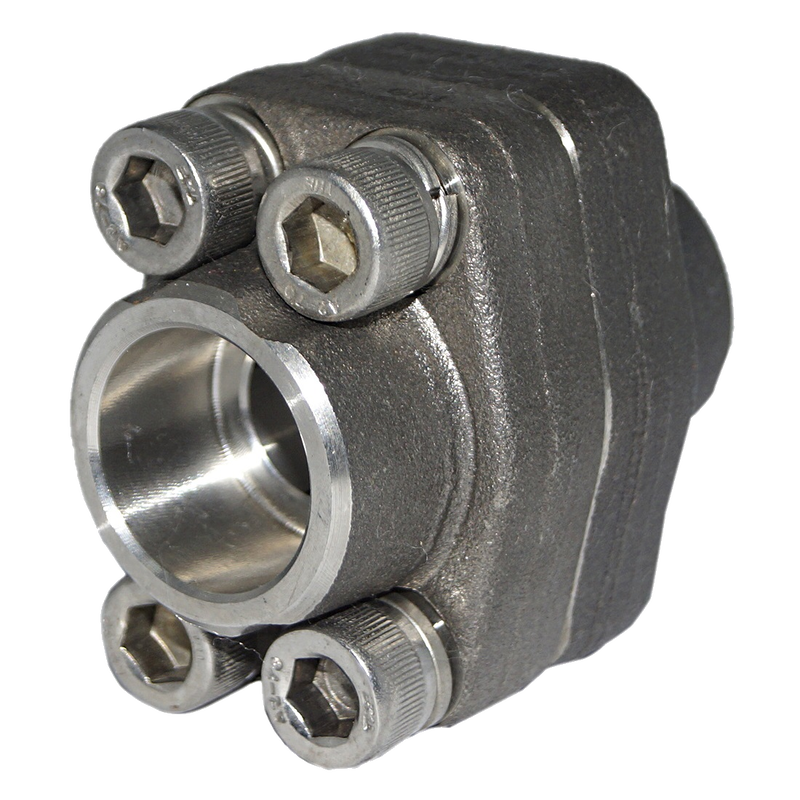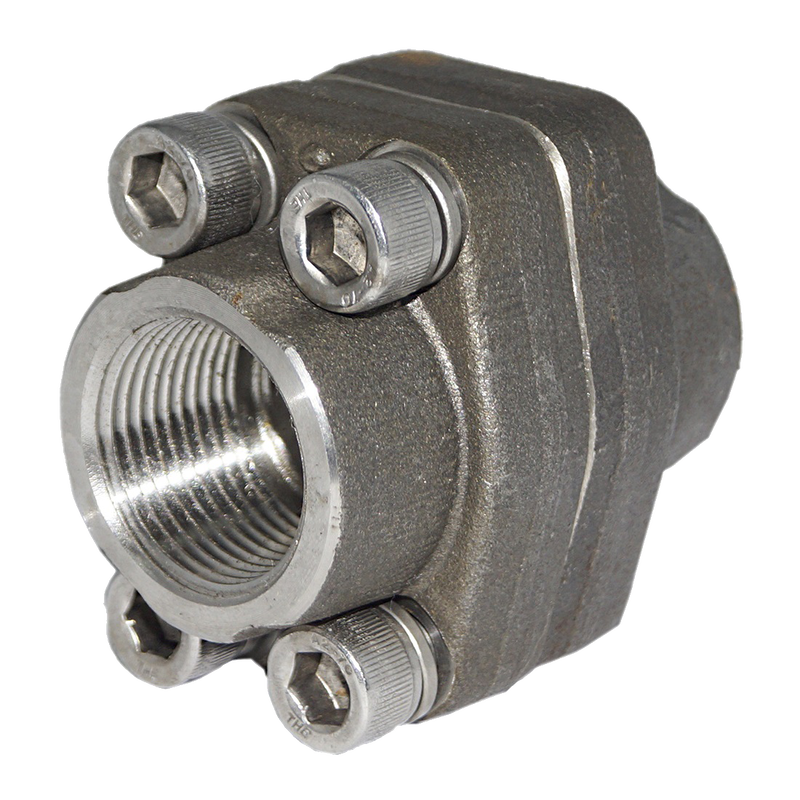SAE Flanges are designed to provide an alternative method of connecting a pipe, hose, tube or equipment. The leak free connection is suitable for high pressures, larger sizes and assembly in tight quarters. It has achieved worldwide standard acceptance.
It is made from normalized forging and the basic raw material is steel with carbon content lower than 0.30%. Alternatively, stainless steel SS316 or galvanized flange material is available. The complete set flange combine of flat face, oring face, oring groove, 4 washers and cap screws.
It is made from normalized forging and the basic raw material is steel with carbon content lower than 0.30%. Alternatively, stainless steel SS316 or galvanized flange material is available. The complete set flange combine of flat face, oring face, oring groove, 4 washers and cap screws.
|
Size
|
|
|
|
Material
|
|
|
|
Series
|
|
|
|
Connection Type
|
|
|
|
Configuration
|
|
|
What are Hydraulic SAE Flanges
1. What are hydraulic SAE flanges use for?
The 4-bolt hydraulic sae flange connection conforms to SAE J518 and ISO 6162 standards. The flange has through holes for the mounting bolts and it has UNC or metric thread. The mounting holes of flat face are tapped while oring face doesn’t include.
The 4-bolt hydraulic sae flange connection conforms to SAE J518 and ISO 6162 standards. The flange has through holes for the mounting bolts and it has UNC or metric thread. The mounting holes of flat face are tapped while oring face doesn’t include.
|
There are various bolt grades that are paired to install in equipment:
|
2. What type of O-rings are used for hydraulic flanges?
|
It is a static face seal which uses a high durometer O-ring for the flange sealing. Metal-to-metal contacts at the outer face of the flange will cause leakage. Therefore, the O-ring sealing is compressed between the flat face and O-ring face providing a reliable soft sealing. Flanges use an O-ring to seal a joint and contain pressurized fluid.
|
The seals of flanges are available in the following materials:
|
Description
|
NBR 70/90
|
Viton 90
|
|
Equivalent
|
BUNA-N
|
FKM
|
|
Temperature Range (°C)
|
-34°C to 121°C
|
-26°C to 205°C
|
|
Recommended Application
|
|
|
|
Non Recommended Application
|
|
|
3. What is the difference between code 61 and 62 flanges?
SAE Flange is designed in two difference code design and it is code 61 and 62. The summary table as per below:
SAE Flange is designed in two difference code design and it is code 61 and 62. The summary table as per below:
|
Description
|
Code 61
|
Code 62
|
|
Series
|
3000
|
6000
|
|
Size
|
3/8” to 5”
|
3/8” to 3”
|
|
Working Pressure (bar)
|
34 to 345
|
414
|
4. How are SAE flanges attached to pipe?
|
Hydraulic SAE flange provides a zero-clearance assembly that enables easy connection, disconnect and maintenance of tube to hose, tube to tube or manifold connection. Infinite positioning is a built-in feature to enable flange to put in different position angle. There are several types of connection: threaded end (NPT or BSPP) and welding end (socket weld or butt weld).
The connection of welding and threaded is able to maximize reliability. However, it is inevitable that connections must be removed to allow replacing or servicing on system components. To improve flanges productivity, flanges have advanced considerably before installation to improve performance, installation convenience but still remain overall function effectiveness and efficiency. |
5. What is the purpose of a SAE flange?
A simple SAE flange installation design provides several advantages:
A simple SAE flange installation design provides several advantages:
- Ability to connect pipe size up to 5 inch.
- Single seal point between pipe or system assembly.
- Much lower tightening torque required from the four bolts compared to other types of flange with equivalent size
- Ease of disassembly through use of split flange.
6. How do you install a SAE flange?
There are 4 simple steps to install SAE flange?
There are 4 simple steps to install SAE flange?
|
Step 1: Check components surface and ensure there are no damage or contamination.
Step 2: Align the flange connection before inserting the O-ring seal on the female flange groove. Place the washer with cap screws and bolt through the bolt holes. Step 3: Hand tighten cap screws to seat O-ring on flange groove. Step 4: Ensure the tighten process meets the torque value below: |
|
Flange Size
|
Screw Thread
|
Screw Torque (NM)*
|
|
1/2″
|
M8
|
32
|
|
3/4″
|
M10
|
70
|
|
1″
|
M10
|
70
|
|
1 1/4″
|
M10
|
70
|
|
1 1/2″
|
M12
|
130
|
|
2″
|
M12
|
130
|
|
2 1/2″
|
M12
|
130
|
|
3″
|
M16
|
295
|
|
3 1/2″
|
M16
|
295
|
|
4″
|
M16
|
295
|
|
5″
|
M16
|
295
|
Flange recommended Torque Value Table Series 3000 Code 61
|
Flange Size
|
Screw Thread
|
Screw Torque (NM)*
|
|
1/2″
|
M8
|
32
|
|
3/4″
|
M10
|
70
|
|
1″
|
M12
|
130
|
|
1 1/4″
|
M12
|
130
|
|
1 1/2″
|
M16
|
295
|
|
2″
|
M20
|
550
|
|
2 1/2″
|
M24
|
550
|
|
3″
|
M30
|
650
|
Flange recommended Torque Value Table Series 6000 Code 62
